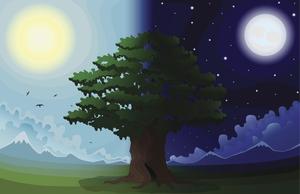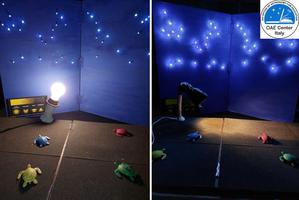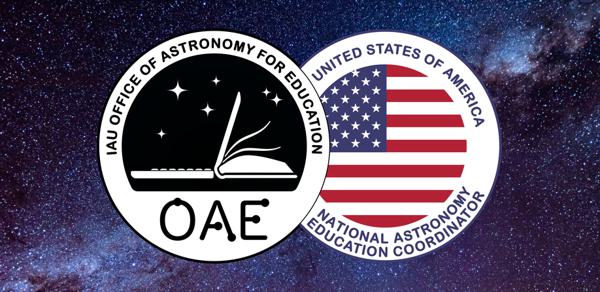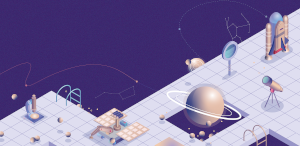Glossarbegriffe: Nacht
Description: Die Nacht ist eine Periode der Dunkelheit, wenn die Sonne unter dem Horizont steht. Die Nacht dauert von Sonnenuntergang bis Sonnenaufgang. Fast überall auf der Erde hat jeder 24-Stunden-Tag eine Nacht. Nördlich des nördlichen Polarkreises und südlich des südlichen Polarkreises gibt es jedoch um die Wintersonnenwende Zeiten der Dunkelheit, in denen eine Polarnacht monatelang andauern kann. In diesen Gebieten gibt es um die Zeit der Sommersonnenwende keine Nacht.
Die Zeit, in der die Sonne knapp unter dem Horizont steht, nennt man Dämmerung. Während der Dämmerung erhellt die Sonne noch einen Teil des Himmels. Die Dämmerung wird in drei gleich lange Zeiträume unterteilt: bürgerliche Dämmerung, nautische Dämmerung und astronomische Dämmerung. Während der bürgerlichen Dämmerung - wenn die Sonne null bis sechs Grad unter dem Horizont steht - ist der Himmel relativ hell, sodass eine künstliche Beleuchtung, wie z. B. eine Straßenbeleuchtung, oft nicht nötig ist. Bei der nautischen Dämmerung - wenn die Sonne sechs bis zwölf Grad unter dem Horizont steht - sind helle Sterne zu sehen. Der Himmel ist hell genug, um den Horizont auch in einer mondlosen Nacht zu erkennen. Dies ermöglicht es Seeleuten, sich mithilfe der Himmelsnavigation zu orientieren. Astronomische Dämmerung ist, wenn die Sonne zwölf bis achtzehn Grad unter dem Horizont steht.
Zugehörige Glossarbegriffe:
See this term in other languages
Term and definition status: The original definition of this term in English have been approved by a research astronomer and a teacher The translation of this term and its definition is still awaiting approval
The OAE Multilingual Glossary is a project of the IAU Office of Astronomy for Education (OAE) in collaboration with the IAU Office of Astronomy Outreach (OAO). The terms and definitions were chosen, written and reviewed by a collective effort from the OAE, the OAE Centers and Nodes, the OAE National Astronomy Education Coordinators (NAECs) and other volunteers. You can find a full list of credits here. All glossary terms and their definitions are released under a Creative Commons CC BY-4.0 license and should be credited to "IAU OAE".
If you notice a factual or translation error in this glossary term or definition then please get in touch.
Related Activities
Why Do We Have Day and Night?
astroEDU educational activity (links to astroEDU website) Description: Explore day and night of Earth.
License: CC-BY-4.0 Creative Commons Namensnennung 4.0 International (CC BY 4.0) icons
Tags:
Tilt
Age Ranges:
6-8
, 8-10
, 10-12
Education Level:
Primary
, Secondary
Areas of Learning:
Modelling
, Structured-inquiry learning
, Social Research
Costs:
Low Cost
Duration:
1 hour 30 mins
Group Size:
Group
Skills:
Asking questions
, Communicating information
Let there be light… but not too much!
astroEDU educational activity (links to astroEDU website) Description: Build a model to learn what light pollution is and what its effects are.
License: CC-BY-4.0 Creative Commons Namensnennung 4.0 International (CC BY 4.0) icons
Tags:
Pollution
, sky observation
, lighting source
Age Ranges:
6-8
, 8-10
, 10-12
Education Level:
Middle School
, Primary
Areas of Learning:
Discussion Groups
, Modelling
, Observation based
, Project-based learning
Costs:
Medium Cost
Duration:
2 hours
Group Size:
Group
Skills:
Asking questions
, Developing and using models
, Engaging in argument from evidence










